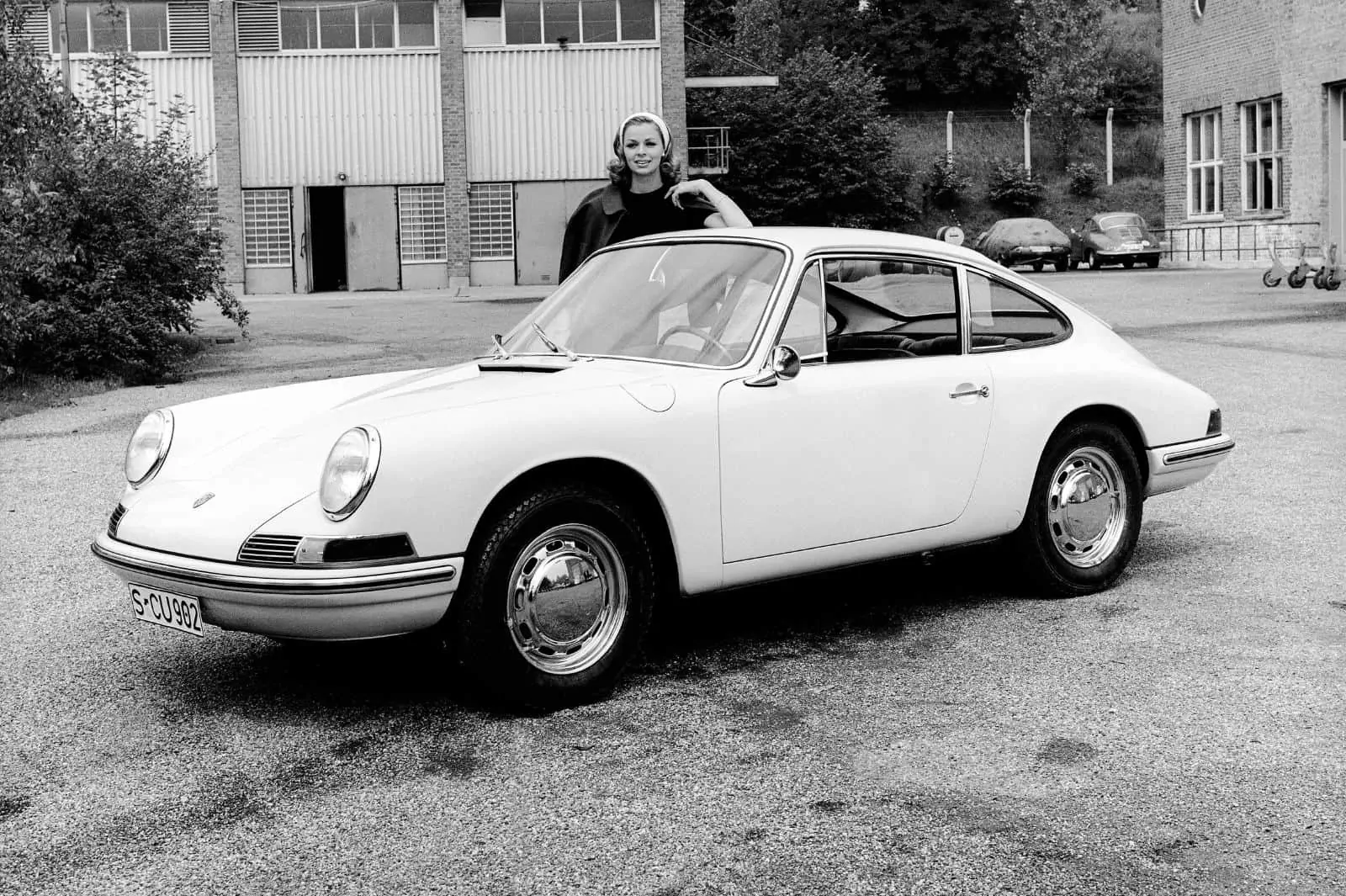Memory and reports of it in its contemporary years do not so much speak of the car’s petiteness – all cars were smaller then – but when you realize that the original 911 is 32cm (over a foot!) shorter and 23cm narrower (and 300kg lighter) than today’s 991C4 (that, incidentally is now longer, wider, taller and heavier than the original 928) you begin to realize that this is a car far, far smaller than anything fast today. A Toyota/Subaru GT-86/BRZ is ten centimeters wider, taller and longer. It’s also heavier and less powerful.
And the 911 feels even shorter and narrower than it is when sitting in it. Your feet are closer to the front number plate than anything modern, other than perhaps an Elise. The lumpen fenders taper forwards to the give the impression that the up-right round lamps are almost as close to each other as those of a Mk1 Land Rover, and its hood falls fast just ahead of its low cowl to bring the road right up to you. Glance over your shoulder and the body appears to end at the base of the nearby rear screen (it really does feel much shorter than a Golf). Driving a 911 is like piloting something someone designed to park in Tokyo not monster the mountain passes and autobahns of Europe.
Yet despite all that smallness on the outside, climb in and it’s got lots of cat-swinging space inside: the lack of massive center tunnel and clear front floor space to play footsy in; the low shoulder and deep, up-right glazing all-around; the compact but useful rear seats that flip to extend the rear parcel shelf into an anything-will-fit-in-if-you-push-hard-enough second boot. It’s a bloody small car but it’s the opposite of cramped.
Considering just the aesthetic design of the 911, the headline is that most people find it attractive but few would call it beautiful. It’s a design most of us have seen all of our lives, looking at it objectively is impossible; the design signifies so much to each of its audience that we can’t see the wood for the trees.
But there is a simplicity and perfect resolution of form and details. There’s an elegance and sculpture to it – particularly its side-window and the rear haunches. There is a puppy-like keenness to the face and a planted stance too. Ultimately though, its squat shortness and not-quite-a-grown-up semantic mean that it feels short of the supermodel beauty conferred on the E-type or Ferrari 275GTB4. It does have a whiff of (ugly) ducking about it – although that is also mixed up in its charm and appeal; in its not-quite-perfectness.
So the Porsche 911 is a very rich thing, is a very fine thing and is a design almost impossible to see with fresh, objective eyes. We enjoyed a few days in one though and reckon we’ve realized a few things that have until now perhaps been untold parts of the 911 design story.
This article first appeared on Car Design Research and was republished with permission











